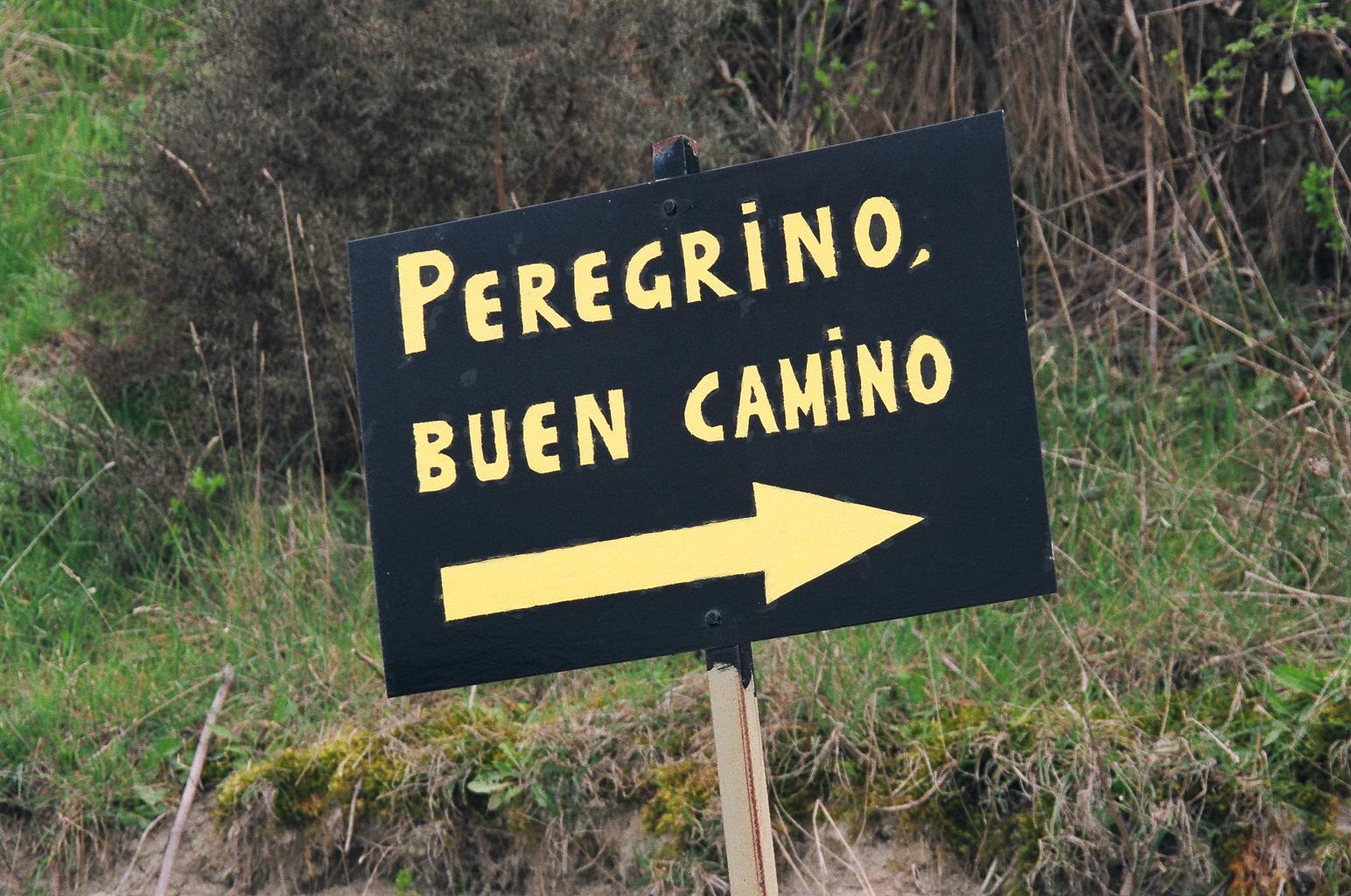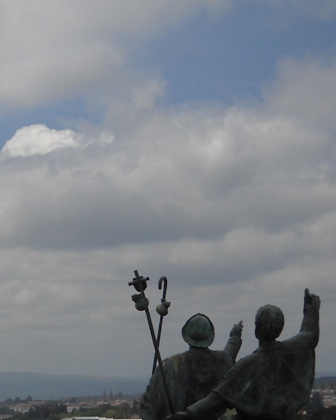About the Camino de Santiago
The Camino de Santiago is an ancient pilgrimage route that leads to Santiago de Compostela, in western Spain. The words el Camino de Santiago translate into English as the Way of Saint James.
Who is Santiago? This page answers that question and then introduces you to the city of Santiago de Compostela, gives you an overview of the role of the Catholic Church, and orients you on the most popular Camino route, the Camino Francés.
At the bottom of this page you will find some links to other pages where you can learn more. For example, you may be wondering, What is the terrain like? Or Who walks the Camino and more importantly, why? Just keep scrolling down the page . . .
And finally, you may be left wondering, How does the Camino work? There is a link to pages that answer that question, too, at the bottom of this page. Good stuff, I promise you!

The Saint: Santiago
In the Catholic tradition, Saint James is the patron saint of Spain. He is a very significant figure in that he was one of the original 12 apostles of Jesus of Nazareth and he is the only apostle whose martyrdom is noted in the New Testament of the Bible.
After the death and resurrection of Jesus Christ, the Apostle James (who was a cousin of Jesus) was sent to the Iberian Peninsula to proselytize and spread the Good News. Estimates put the number of James’ converts at fewer than 12.
When James returned to Jerusalem from now-Spain, he was beheaded by the current King Herod. Legend has it that his body then was miraculously transported to the west coast of Spain in a stone barge and buried in a hillside.
Fast forward to the 800s, when a monk discovered the remains, the local Bishop authenticated the find, and now we have a destination for one of the most important pilgrimages in Christendom.
The Destination: Santiago de Compostela
The remains of Saint James are now entombed in the Cathedral in Santiago de Compostela, and the city has become a destination in its own right. A vibrant university town, Santiago offers a wide array of historical, architectural, cultural, and culinary delights. In 2018, more than 327,000 people arrived into Santiago as pilgrims on the Way.
In the early days of the pilgrimage, people journeyed to Santiago by walking out the front door of their homes and joining one of the established routes that wend their way through the European continent.
Now people come from all over the world to walk the Camino de Santiago, and most fly and take a train or bus to one of the main towns or cities along the 800 kilometer stretch that begins on the French side of the Pyrenees Mountains and ends in Santiago de Compostela.
The Church: The Role of the Catholic Church
Records show that in the Middle Ages hundreds of thousands of people arrived in Santiago each year, and when they did, they received a ‘plenary indulgence’ from the Church that granted them full remission from the temporal punishment of purgatory.
This doctrine is still intact within the Catholic Church, and modern day pilgrims can receive the same pardon by completing specific requirements in conjunction with a visit to the Cathedral in Santiago.
In addition to the indulgence, modern pilgrims who reach Santiago after walking at least 100km (or cycling at least 200 km) receive the Compostela. To receive the Compostela, a pilgrim must identify the reason for the pilgrimage as either religious or spiritual. Pilgrims who walk for different motives receive a certificate rather than the Compostela.
The route: The Camino Francés
The most popular route to Santiago is called the Camino Francés. This route begins in France, on the East side of the Pyrenees Mountains, in Saint Jean Pied de Port, and continues all the way across Spain to Santiago de Compostela.
The Camino Francés passes through many cities, towns, and hamlets, including Roncesvalles, Pamplona, Logroño, Burgos, León, Astorga, Ponferrada, and Sarria.
While the majority of pilgrims begin their pilgrimages in Saint Jean Pied de Port in France, and Sarria in Spain, you can begin your pilgrimage to Santiago in any of these cities, or in any of the towns and villages along the Way. Check out the map, below, for an introduction to the Camino Francés route.
Other Routes
Many roads lead to Santiago de Compostela. Modern day pilgrims can travel the route of their choice. They will receive the Compostela from the Church as long as the meet the requirements of walking at least the last 100 kilometers or cycling at least the last 200 kilometers into Santiago.


Want to learn more?
Check out these links:
The Terrain of the Camino Francés
Who Walks the Camino…and Why
And to learn How it Works:
Documenting Your Journey
Navigating the Trail
Sleeping on the Camino
Eating on the Camino
Get your FREE copy of Nancy’s
Top 10 Camino Tips
(that don’t usually show up in the top 10 lists)
